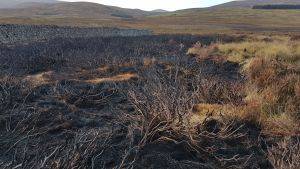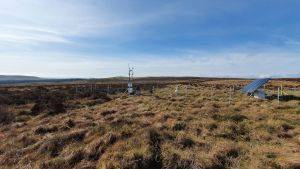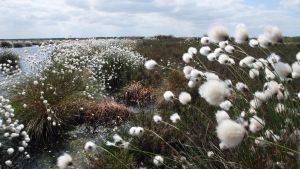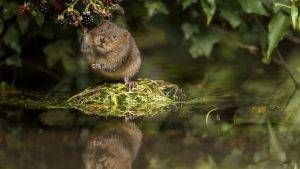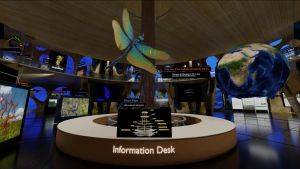The news of major fire incidents in the uplands of north of England during this year’s summer heatwave is deeply concerning both in terms of the impact on people and the environment. While the specific circumstances around the various fires are still being investigated, discussion has turned to the issue of peatlands and the role of managed burns.
 The IUCN UK Peatland Programme has produced a position statement on burning and peatlands, available online. The scientific evidence gathered to date indicates that burning on peatland can result in damage to peatland species and habitats, peat soils and peatland ecosystem functions. Extreme weather events, managed burns running out of control, acts of arson or accidental fires, pose a serious risk to peatlands however they are managed.
The IUCN UK Peatland Programme has produced a position statement on burning and peatlands, available online. The scientific evidence gathered to date indicates that burning on peatland can result in damage to peatland species and habitats, peat soils and peatland ecosystem functions. Extreme weather events, managed burns running out of control, acts of arson or accidental fires, pose a serious risk to peatlands however they are managed.
Wet peatlands with a stable high water table, dominated by peat forming plants such as Sphagnum mosses naturally have little dry material for fires to consume and low chances of the peat igniting.
Damaged peatlands with drier peat soils have more combustible woody vegetation such as heather and grasses that increase the chances of fires becoming severe. Deliberate fire management to burn the heather on these degraded peatlands introduces additional risks of fires getting out of control and compromising the recovery of the peatland.
The most effective long term sustainable solution for addressing wildfire risk on peatlands is to return the sites to fully functioning bog habitat by removing those factors that can cause degradation, such as drainage, intensive grazing and burning.
Peatland managers from across the water industry, livestock, sporting and nature conservation sectors have all agreed that damaged peatlands are an unsustainable liability and that rewetting makes sense for business, livelihoods and the environment. Government policy on burning management is clear that burning should not take place on peatland habitat and that restoration of degraded peatlands does not require heather to be burned off. In some special circumstances burning is permitted as a tool to support peatland restoration but there is limited scientific evidence as to the benefits compared to a no-burn approach.
Clifton Bain, Director IUCN UK peatland Programme said:
“Peatlands should naturally be wet, helping to protect huge carbon stores in the peat deposits. Time and again we see the high costs and threats to people in Britain and around the world where peatlands have been drained and dried out leaving them vulnerable to severe fires.
Tackling the root cause of the problem by rewetting peatlands has been shown to work, with excellent examples of peatland restoration. While rewetting can have immediate benefits, the impact of decades and even centuries of damage can mean that full recovery of peatlands can take some time and that during this period they are very sensitive to fire.
Wet peat supporting peatland plants has a low fire risk, benefits our water supplies, retains carbon and supports important wildlife. Spending effort now in rewetting peatlands avoids far greater costs imposed by damaged peatlands.”

